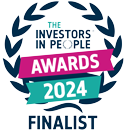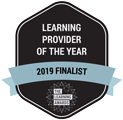
The APT-DICES® Award for Excellence in Risk Assessment and Management.
These annual awards were established to keep people 'enthused' and thinking about how they can apply training in risk assessment and management in their practice. Application is simple: just 2,000 words, and the preparedness to present your submission here in Leicester if you are shortlisted. The application may be on your own behalf or on behalf of your service and each successful submission will be published on our website.
The benefit of receiving such an award is primarily in satisfaction and status. The tangible benefit is in the form of a certificate, which states your receipt of the award. You will also be able to put the award winner logo and words “Recipient of the APT-DICES® Award for Excellence in Risk Assessment and Management 2019” on your letters / emails, if you wish.
What the award looks for is: (A) a description of an assessment / intervention with a patient or group of patients, (B) the assessment/intervention will feature DICES® largely, although not necessarily being the only action you make with this patient, (C) what you describe should “inspire” other people who read it – they should have ideas they want to implement in their practice too.
The awards will be made annually, and the closing date for submissions is the last day of July. You can make submissions at any time during the year, requesting feedback on your entry if you wish. Results will be announced shortly after the closing date each year. To enter, email your submissions to office@aptcanada.com
The APT-DICES® Award for Excellence in Risk Assessment and Management:

The DICES® System for Risk Assessment & Management.
Available in 3-day and 2-day versions.
The DICES® system makes risk assessment clear, structured and person-centred. Over 6,000 professionals now use the DICES® Checklists to support their practice because they are practical prompts, not questionnaires – they help clinicians bring together key factors, apply their expertise, and create a person-centred risk formulation in line with internationally recognised clinical guidance (e.g. NICE in the UK).
At its heart is the DICES® ‘risk triad’:
- Identify and formulate risk.
- Manage the risk.
- Deliver effective treatment with confidence.
The training covers the first two of those and introduces the third, and is available as a 2-day course for most practitioners, and a 3-day course for senior personnel or DICES® champions who need greater depth.


